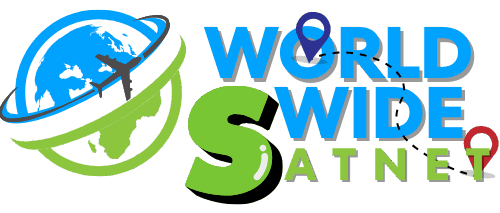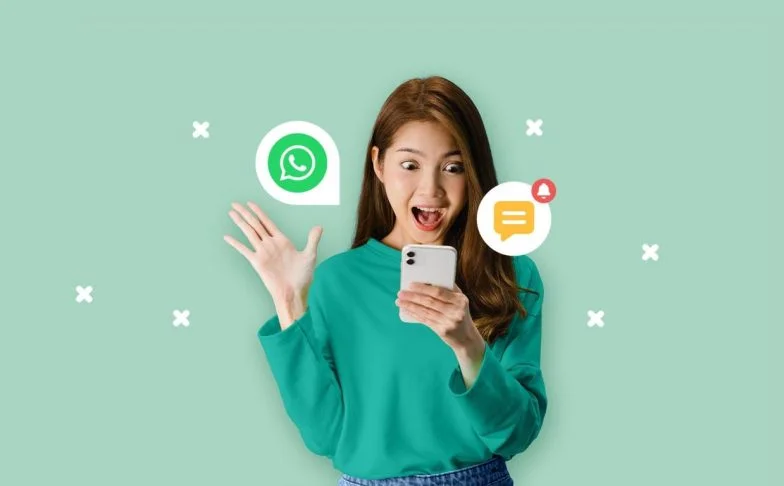Have you ever thought about what businesses can do to send out instant, well-structured, and engaging messages to their customers using WhatsApp? What is WhatsApp Business API? Business API Message Templates make it possible for companies to send customized messages, updates to orders, promotions, and customer support messages seamlessly.
They are created to increase the engagement of customers, streamline conversations and ensure conformity with WhatsApp guidelines. With a variety of message formats, such as media-rich, text-based, and mix templates, businesses can customize their messaging strategies to make the most impact.
In this article, we’ll provide the complete information you must be aware of WhatsApp message Templates that range from the types of templates and best practices to costs and optimization strategies that can help businesses make the most of WhatsApp to provide a better customer experience and better conversion rates.
Table of Contents
Understand WhatsApp API Message Templates
WhatsApp API WhatsApp API Message Templates are approved messages that aid businesses in communicating effectively. They facilitate quick, well-structured, and customized messages for reminders, notifications, and other promotions.
Since WhatsApp regulates messages for business templates must be governed by guidelines and receive approval before using them. Businesses can personalize them with the details of customers, such as names, or the status of an order.
The templates are classified into marketing, transactional, as well as authentication types, providing that customers are in compliance as well as engaged. Utilizing the WhatsApp Business API, companies can automate messaging, improve the response rate, and provide regular updates to improve customer satisfaction and retention.
Types of WhatsApp Message Templates
Businesses are increasingly focusing on personal and efficient messaging. WhatsApp offers a variety of templates for messages that are that are adapted to the needs of different users. Knowing these templates helps companies increase their customer engagement and communication.
1. Text-Based Templates
Text-based templates are easy to use and extremely effective in delivering short and clear messages. These templates are frequently utilized to send order confirmations or appointment reminders, as well as feedback requests. If it’s an update on the status of an order or a confirmation of a booking or a booking confirmation, a WhatsApp Business API text message template will ensure that important information is delivered to customers promptly.
2. Media-Based Templates
In today’s digital landscape, visual content enhances engagement. Media-based templates can accommodate videos, images, audio clips, images, and documents, making them suitable for marketing and promotional content. For example, a WhatsApp template for marketing messages could include a teaser of a product, and the WhatsApp promotional message template could contain an attractive picture of a sale deal. These attractive messages draw interest and can increase conversions.
3. Combination Templates
Combination templates blend media and text, offering an engaging way to connect with customers. Restaurants can use a WhatsApp chat template containing an option to text along with an image of their signature food. Similar to a travel company, a travel agency can send the WhatsApp template for text messages about the holiday package, accompanied by breathtaking images of the location.
How to Create a Customised Messaging Template
Making a great WhatsApp Business API message template requires a thoughtful approach in order to guarantee clarity, participation, and adherence. Here are the steps to follow:
1. Define the Purpose & Keep It Concise
Find out if the message is intended for announcements, updates or customer service. Make sure the message is concise as well as informative and free of any unnecessary information to ensure quick readability and more engagement.
2. Personalize your placeholders with the help of Placeholders
Utilize active fields (e.g., the name of the customer and order number or date of appointment) to tailor relevant messages. Personalization enhances the user experience and improves response rates.
3. Select the Right Template Type
Choose among text-based, media-based, or combination templates based on the goals of your communication. Visual elements such as images, documents, videos, or even images will make messages more memorable and engaging.
4. Include a Strong Call-to-Action (CTA)
A properly-placed CTA (e.g., “Track Order,” “Confirm appointment,” “Get Deal”) directs customers to their next steps, thereby increasing the engagement of customers and converting them.
5. Ensure Compliance & Test for Optimisation
Follow WhatsApp’s guidelines to prevent messages from being rejected. Try different formats for messages and CTAs to increase efficiency and engagement with customers.
Essential Tips for Crafting Standout WhatsApp Message Templates
Making a successful WhatsApp Business API message template is a meticulous process. Here are some key tips to help you design templates that are resonant with your target audience.
1. Keep Messages Clear and Concise
Be sure that your message is concise, simple, clear, and understandable. Avoid complicated jargon or lengthy explanations. A concise, well-structured message can improve readability and increase response rates and make it easier for clients to understand the information quickly.
2. Choose a Descriptive Template Name
Make use of short words that convey the purpose of the message, like payment confirmation or order confirmation. Avoid spaces, special characters or letters in uppercase to ensure compatibility and ease of managing. A descriptive name will allow for quick identification as well as a more organized way to track messages.
3. Format Your Template Properly
Be sure to use correct punctuation and spacing so that messages are easy to understand. Incorrectly formatted messages could appear unprofessional and difficult to comprehend. Also, make sure placeholders are formatted correctly to allow for personalized and dynamic content.
4. Align With Customer Journey
Plan out your customer’s interaction flow and then send appropriate messages at the right moment. For instance, you could send a confirmation of an order following the purchase, or an appointment reminder before the scheduled appointment or a follow-up email after service. This will increase engagement and build confidence in the customer.
5. A/B Test Different Versions
Try different message formats as well as calls to action (CTAs) to find out the one that works best. Test A/B by distributing different versions of the template to a smaller audience, and then analyzing which has the highest response, engagement or conversions.
6. Ensure Compliance With WhatsApp Guidelines
Always adhere to WhatsApp Business and Commerce Policies to ensure you don’t get rejected. Be sure not to send fraudulent, misleading or sensitive requests (e.g., personal banking information). Make sure your tone is professional and professional. Be sure to be friendly to customers to prevent any infringements.
7. Use a Friendly and Engaging Tone
Avoid formal or robotic language. Keep your messages simple and casual. A friendly tone can make interactions more likable and enjoyable, increasing the likelihood of a positive reaction and interaction.
8. Add a Clear Call-to-Action (CTA)
Help customers know what they need to do next by incorporating the following CTA, such as “Click to Confirm,” “Reply to YES”, as well as “Track Your Order.” A properly placed CTA can encourage action from customers and boost the rate of engagement.
Cost of Creating and Managing WhatsApp Message Template
The price associated with WhatsApp Business API message templates depends on several elements, such as the creation of templates, approvals of the template, and pricing per message. Here’s a breakdown of major cost components and management elements:
1. WhatsApp Template Approval & Setup Costs
Before submitting a template for a message, it must be approved by WhatsApp and must be in the adherence to WhatsApp’s guidelines. Certain WhatsApp Business Solution Providers (BSPs) charge an initial fee for templates and for approval, while others offer it as part of their plans for service.
2. Per-Message Pricing Based on Conversation Categories
WhatsApp is a chat-based pricing model. Businesses are charged per business or user-initiated message. Prices vary depending on the class (e.g., utility, marketing as well as authentication) as well as the recipient’s country.
3. Charges by WhatsApp Business Solution Providers (BSPs)
Companies that use an external BSP to provide API access might be charged additional costs. These service providers can be charged a monthly fee or a per-message price, depending on their pricing model, which includes other features such as analytics and automation.
4. Cost of Personalisation & Automation
If companies integrate chatbots or CRM tools to customize and automate their messaging, there may be additional costs associated with API integrations or subscriptions to software. Automating your processes enhances customer engagement and reduces the amount of manual work.
5. Monitoring & Management Expenses
The management of templates for messages, optimizing responses, and testing A/B could require resources or external tools. Certain companies employ specialists or sign up to analytics to track the performance of templates and make sure that they comply, thereby increasing the total cost.
Conclusion
WhatsApp Business API Message Templates can be a game changer for companies that want to streamline communications and increase customer engagement. When choosing the best template type, and ensuring compliance and incorporating personalisation, automation and A/B testing, companies can improve their messaging and increase responses.
Understanding the costs that are associated with WhatsApp templates can help businesses manage budgets in a way that maximizes the return on investment. If you’re a small-scale business or a major corporation, WhatsApp templates provide an efficient way to communicate with your customers in a structured and effective way.




